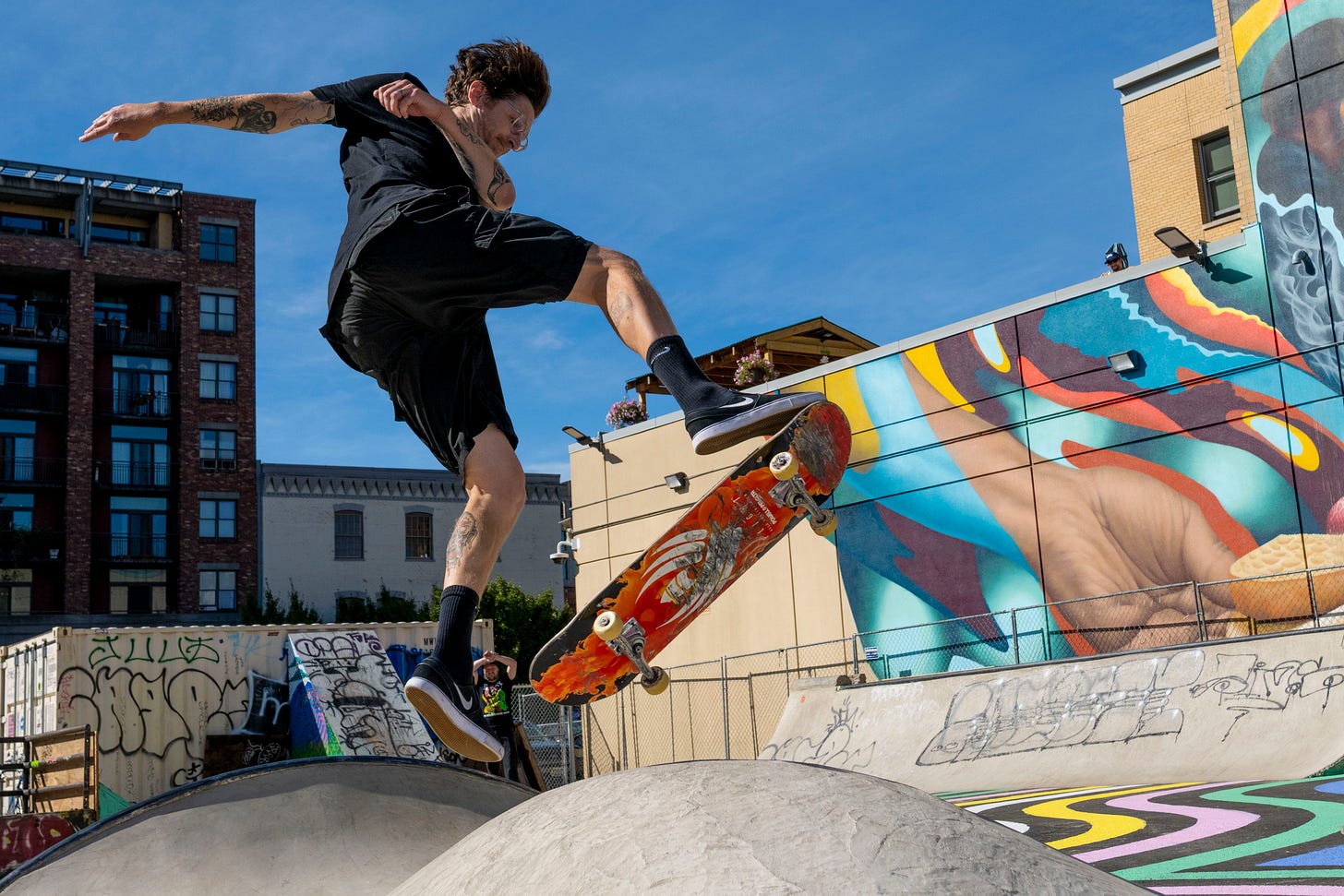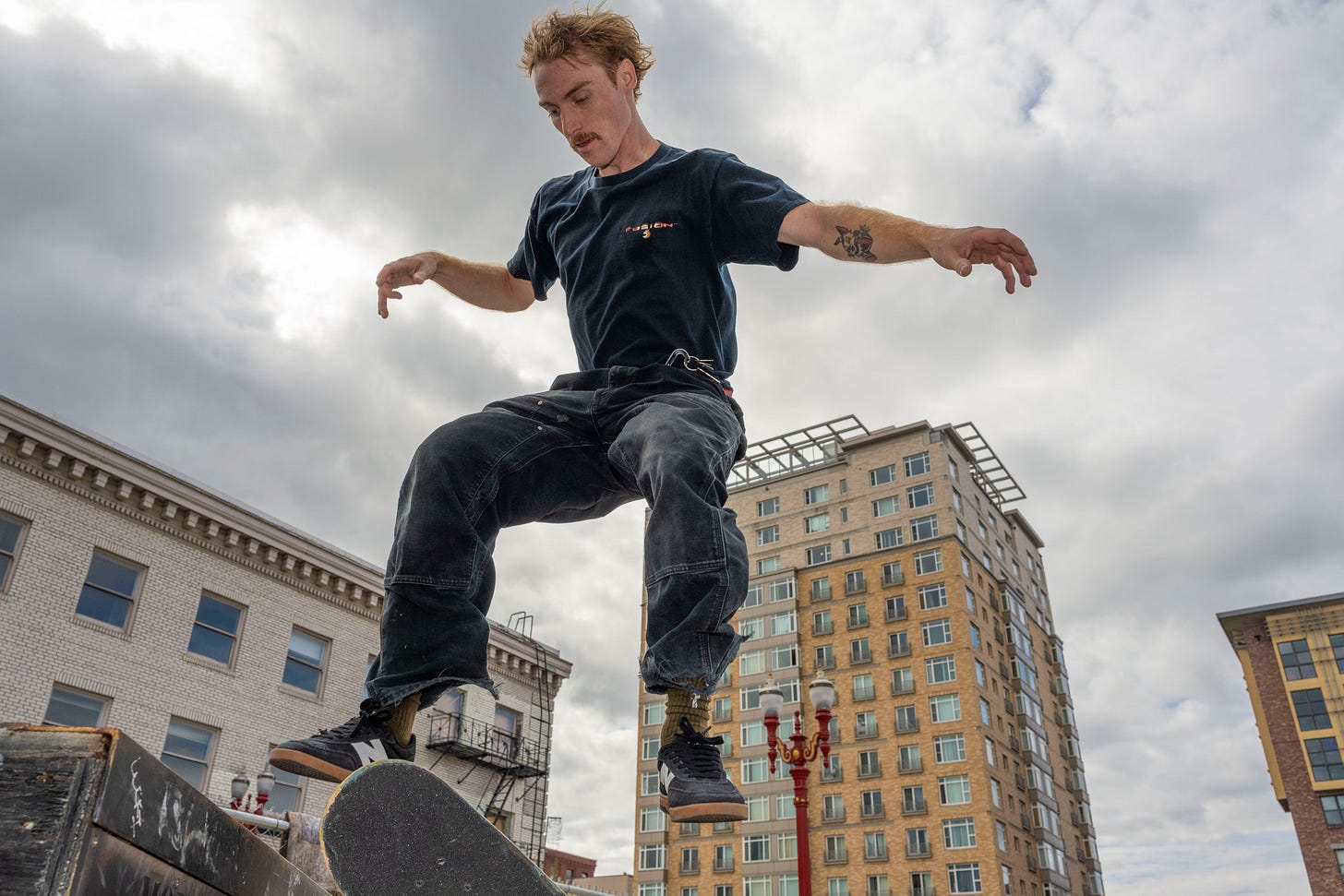Q-Side: A skate park is born in Old Town
Business owners, nonprofits band together with the city to transform an old parking lot into a hot spot for skateboarders

Old Town Portland. It’s raining outside. Indoors at P:ear Mentor teenage kids sit together at tables eating a hot breakfast. It smells like coffee and toast, and it’s quiet except for the sounds of low conversations. A visitor’s mind jumps to where these kids were last night and where they’ll go tonight.
P:ear, as it’s known for short, is a Portland nonprofit that mentors people age 15-23 who are homeless or transitioning out of homelessness. Their Old Town building, purchased in 2021, has a café with a walk-up window on Northwest Flanders. P:ear’s barista training program happens here, and skills around customer service, pulling shots, and running a business are built. There’s a bike repair program, an art program. A garden and flower stall are in the works.
Beth Burns, P:ear’s director, zooms down the stairs from her office. She just had an audition for the Kelly Clarkson talk show. They told her to be peppier, she reports, laughing because she radiates energy.
“We don’t talk about homeless people or poverty as if they deserve those things,” Burns says. P:ear’s goal is to create a sense of belonging so kids can push through what she calls “the Herculean task of moving beyond the trauma, foster care and family separation of their young lives. Letting their minds expand a bit from survival mode to give them space to hope and dream.”
Last Spring, P:ear learned that a skate park was planned for a nearby parking lot owned by Prosper Portland, the city’s development agency. A network of people joined forces to activate the lot: Anne Hill, who runs the city’s Problem Solvers network, Cal Skate and Jessie Burke of the Society Hotel connected with legendary skateboarder Willis Kimbel.
“We brought over some ramps and obstacles that we already had,” says Violet, a P:ear staffer and skater. “This one is so smooth and open. It’s a great place for kids to start.”
Old Town is gritty. But what does it mean to add joy and activation to this environment? “Something joyous and visible, that’s outdoor-active in the ethos of the DIY movement,” Burns said.
Recently, Violet painted the skate park grounds in rows of flowing purple, green, pink and yellow, inspired by a P:ear kid who hoped it would feel as if they were skating on water. Q-Side is named for Pat Quirke, a legendary skateboarder in the Northwest. The suffix “side” is derived from the Burnside park, which has inspired other DIY parks around the world.
“Portland’s been a hotbed of skating since Mayor Bud Clark and the Burnside Skate Park,” Violet says. “Our ethics of getting (stuff) done in a scrappy way, that’s skateboard culture.”





